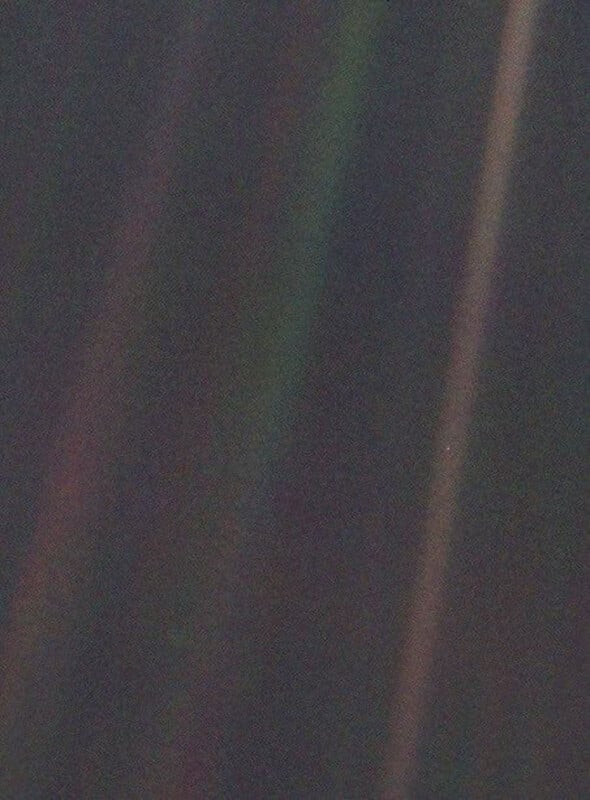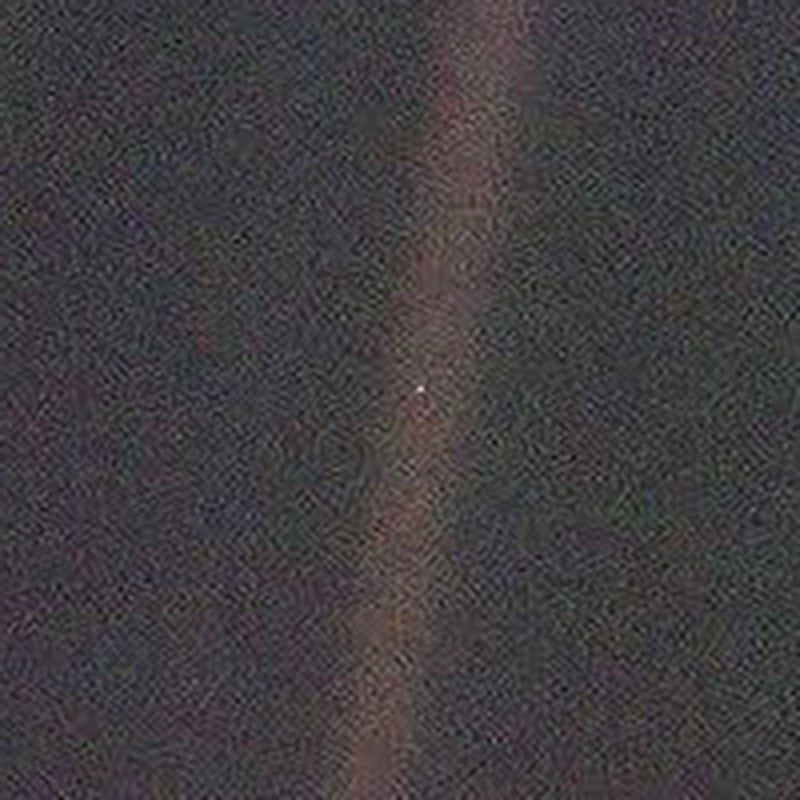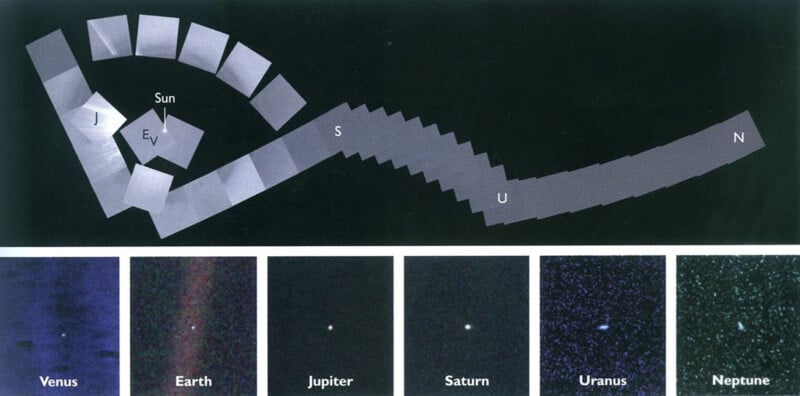Iconic ‘Pale Blue Dot’ Photo, Most Distant Portrait of Earth, Turns 35

35 years ago, the historic NASA Voyager 1 spacecraft captured a Valentine’s Day photo, “Pale Blue Dot,” that continues to amaze and enchant viewers decades later.
“Pale Blue Dot,” among the most well-known space photographs ever, shows Earth from six billion kilometers (3.7 billion miles) away. It remains the most distant photo ever captured of Earth.
NASA’s Voyager 1 spacecraft, launched into space on September 5, 1977, captured the photo on February 14, 1990. Thanks to the advocacy of the late astronomer Carl Sagan, NASA engineers directed one of Voyager 1’s cameras back to the planet the spacecraft departed from nearly 13 years earlier to capture one final shot of Earth as a tiny blueish-white speck against the darkness of the cosmos.


This image, which means many different things to the millions of people who have seen it, inspired Sagan’s 1994 sequel to Cosmos, Pale Blue Dot, which combines philosophy and science to grapple with humanity’s place in the Universe. Earth looks so tiny in the photo that it is impossible not to feel something — it is undoubtedly among the most influential photos ever captured.
Over the years, NASA has revisited the iconic photograph, enhancing its clarity through improved digital processing techniques. The most recent update, featured at the top of this story, was published in 2020 to celebrate the image’s 30th anniversary. The original shot is just 453 pixels wide and 614 pixels tall, captured by one of the two onboard cameras. Both are vidicon cameras, which are very early television cameras.
One of the two cameras features a wide-angle lens for shooting planets as Voyager passed them, and the other has a longer focal length.
Notably, this discussion is in the present tense because, yes, NASA’s Voyager 1 is still operational in the far reaches of space. Voyager 1, which actually launched two weeks after Voyager 2, is moving away from Earth at over 38,000 miles per hour and is currently nearly 15.5 billion miles away, getting (much) farther by the second. Voyager 1 became the most distant human-made object ever in August 2012.
Although the Voyager 1 mission remains active, and mission operators could power on the cameras, the team says it is not a priority. Voyager 1 and 2 are still collecting scientific data and sending it back to Earth, although instruments are being disabled individually. NASA believes the last contact for Voyager 1 will be in 2036, nearly 60 years after it launched into space.
Voyager 1’s final image was “Solar System Family Portrait” in 1990, a series of 60 photos showing six solar system planets.

Like “Pale Blue Dot,” this image series is also celebrating its 35th birthday today. While the 60 photos were not all captured that day, for obvious reasons, the series was published on February 14, 1990, and remains the first and only time a spacecraft attempted to capture the solar system in its entirety. The series contains “Pale Blue Dot,” alongside images of Venus, Jupiter, Saturn, Uranus, and Neptune.

Mars was obscured by scattered sunlight during the potential shooting opportunity, Mercury was too close to the Sun, and Pluto was too tiny and dark to be detected by Voyager 1’s cameras.
“The family portrait is a symbol what NASA exploration is really about: Seeing our world in a new and bigger way,” said Dr. Thomas H. Zurbuchen, Associate Administrator of NASA’s Science Mission Directorate, in 2018.
What better way to celebrate the impact of “Pale Blue Dot” than with a quote from Carl Sagan’s 1994 book of the same name:
Look again at that dot. That’s here. That’s home. That’s us. On it everyone you love, everyone you know, everyone you ever heard of, every human being who ever was, lived out their lives. The aggregate of our joy and suffering, thousands of confident religions, ideologies, and economic doctrines, every hunter and forager, every hero and coward, every creator and destroyer of civilization, every king and peasant, every young couple in love, every mother and father, hopeful child, inventor and explorer, every teacher of morals, every corrupt politician, every ‘superstar,’ every ‘supreme leader,’ every saint and sinner in the history of our species lived there — on a mote of dust suspended in a sunbeam.
Image credits: NASA/JPL-Caltech